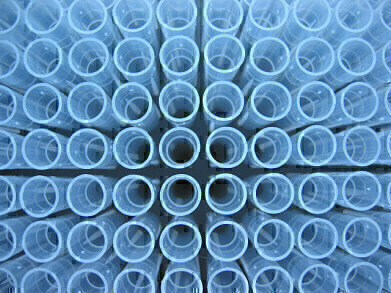Air Monitoring
What is Laboratory Proficiency Testing?
Nov 03 2014
Proficiency testing, or interlaboratory comparison, is a process used by groups of laboratories to monitor measurements, results, and to continually evaluate performance. Each laboratory participating in a proficiency test will analyse the same set of samples and report their results to a third party accreditor. The accreditor evaluates the measurements from each participant and produces a report. The results of a proficiency test allow laboratories to measure their performance against other participants, gaining a better understanding of their processes and procedures, and meet legislative requirements.
Proficiency testing in emissions measuring
The practise of proficiency testing first emerged in the US during the 1940s as a means to assess the competencies of a laboratory. Two decades later, the process was formalised with the introduction of the Clinical Laboratory Improvement Act of 1967 to regulate large, independent laboratories that processed over 100 specimens a year. Proficiency testing is now standard practice and is applicable to laboratories operating in most scientific fields.
Since 1996, the Association of Laboratories for Emissions Measuring (ALEM) has organised proficiency testing in the field of emissions measuring and is now a prominent proficiency testing provider. The ALEM’s current proficiency testing schemes include the determination of selected gaseous components (CO, NO, SO2), particulate matter (TSP) mass flow in flowing air mass, and fluorides and chlorides in a solution.
Technical University of Ostrava
The VŠB (Technical University of Ostrava) use their own experimental equipment to enable researchers to set a comparative reference when measuring particulate matter or dust emissions. Built at the University’s Energy Research Center workplace in 2008, the equipment known as a dust testing train has been used for proficiency testing by groups from the Czech Republic, Poland, Slovakia, Germany, and Serbia since 2009.
A specialist piece of equipment, the dust train is able to measure particulate matter mass flow, particulate matter mean concentration, and air mass mean velocity during testing. The proficiency tests conducted at the Energy Research Center workplace are accredited by the ALEM. You can read more about this topic in this article, Proficiency Testing for Determination of Particulate Matter on Dust Testing Train.
What are the benefits of proficiency testing?
There are a number of benefits to proficiency testing for laboratory staff and companies alike. First and foremost, staff are provided with an insight into their laboratory’s performance, and can compare their competence with that of other laboratories, nationally and internationally. Reports are mostly confidential; results from the proficiency test are published and measured, yet the laboratories listed within the report will remain anonymous.
Proficiency tests can also help laboratory staff identify areas where problems may arise, and to monitor and make improvements to the standards of laboratory research and analysis. This, in turn, will not only educate staff by raising awareness of the impact of incorrect test results, but also allow companies to demonstrate a commitment to maintaining high standards to clients, accreditation organisations, and interested parties.
Digital Edition
IET 34.2 March 2024
April 2024
Gas Detection - Biogas batch fermentation system for laboratory use with automatic gas analysis in real time Water/Wastewater - Upcycling sensors for sustainable nature management - Prist...
View all digital editions
Events
Apr 30 2024 Melbourne, Australia
Apr 30 2024 Birmingham, UK
May 03 2024 Seoul, South Korea
May 05 2024 Seville, Spain
May 06 2024 Minneapolis, MN, USA


















